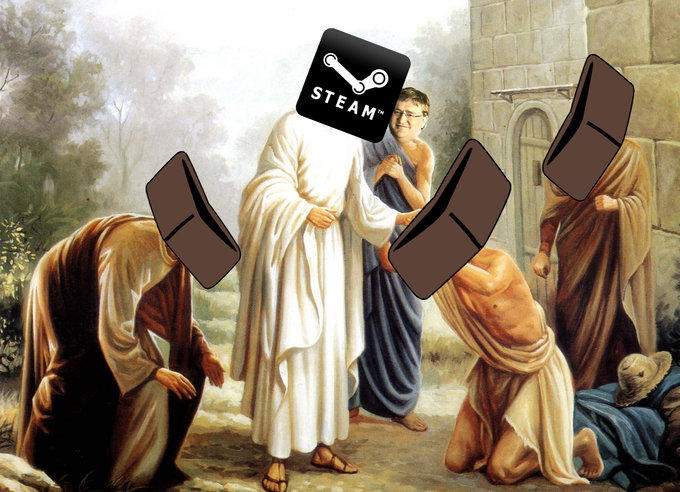Build your customer referral program without the dev time
Sign up for a free trial of GrowSurf to lower your customer acquisition costs, increase customer loyalty, and save gobs of time.
Launch Your ProgramThe scarcity principle, the 6th of Dr. Robert Cialdini's Principles of Persuasion, is based on the psychological phenomenon that people assign more value to opportunities when they are less available. The idea is that people don't like the feeling of missing out, known as FOMO (Fear of Missing Out), so they are more motivated to act when scarcity is introduced. According to a study by Worchel, Lee & Adewole, participants rated cookies as more desirable when they were told the supply was limited compared to when the supply was perceived as abundant.
Scarcity works based on psychological theorems whereby people, in general, consider goods and services to have higher value when they are limited in supply.
To borrow from almost every MMORPG game in existence, items that are deemed to be common are seen as having low value, uncommon items slightly more valuable and rare items even more valuable. We won’t dig into epic or legendary items in this particular article.
Consider a scenario where you, a potential customer, are walking through a mall. Upon entering a store, you spot that some items are marked as "Limited Availability" or "Limited Edition." Suddenly, you feel a sense of urgency and desire to grab these items while you have the opportunity. This is an example of feigned scarcity, a marketing tactic where brands artificially create a perception of scarcity to drive demand. As noted by Cialdini, "Anytime you tell people that something is scarce, they're going to want it more." By implying that supplies are limited, retailers can trigger consumers' fear of missing out and motivate them to make a purchase.

Source: Flickr, Jesper Sehested Pluslexia.com
It’s incredibly normal to see any number of these statements adorning the aisles of stores, supermarkets and emporiums:
These types of scarcity cues, whether through text or visuals like countdown timers, create a sense of urgency that "if the person doesn't commit the purchase, they will miss out on the item or deal," according to marketing professor Deborah Small.
“When it comes to effectively persuading others using the Scarcity Principle, the science is clear. It’s not enough simply to tell people about the benefits they’ll gain if they choose your products and services. You’ll also need to point out what is unique about your proposition and what they stand to lose if they fail to consider your proposal.” Dr Robert Cialdini
Simply telling people that there's a limited number of the item usually isn't enough. You need to clearly communicate the benefits and value proposition that consumers will miss out on if they don't act quickly. As marketing professor Jonah Berger explains, "Scarcity works not just because things are rare but because rare things are revered. We tend to want things that are scarce because they seem more valuable." Unless it's a purchase where there's truly only one of that item (like a house purchase in a competitive market), you'll need to highlight what makes the scarce product desirable and worth acting on.
🛒 What do supermarkets and #ecommerce shops have in common?
— Chris Tweten 🍁 (@ctwtn) July 7, 2021
They both leverage scarcity to drive sales!
In this thread, I’ll go over the psychology of scarcity and how to use it effectively 👇
There are four core ways to drive more conversions towards your business making use of the scarcity principle. Each one of them has been proven and will work in some way, shape or form. But be wary of leveraging scarcity too often or relying on it too heavily in your business. It can, instead, lead to adverse effects on your conversion rate and revenue.
Scarcity can lead to people making the wrong choice and poor decisions that can lead to major negative consequences for their lives. This is something to be especially wary of if you’re offering people high ticket items. It has been proven that those in poorer mental states (lacking financially, lacking physical or mental health, lacking affection and friendships) are far more susceptible to scarcity tactics as their desperation increases. The last thing that you want is to be seen to be praying on society's most vulnerable.
That said, used correctly and morally, scarcity remains one of the most effective marketing tactics:
In these instances, the actual supply of the product has a limited, tangible number. This is at its most powerful when used with physical acts where people can explicitly see the number of products is depleting in front of their eyes. The key element is that the consumer has to genuinely believe that there is a limited supply. Once you sell out, the illusion will be immediately (and irreparably) broken if you just bring out more stock.
There aren't many people who genuinely remember the days when Spotify wasn't mainstream and everywhere. But these times did exist. Rather than open up their platform immediately, Spotify's marketing team decided to create a system of invites where you simply weren't allowed to join the platform unless you received one. The genius in this tactic was that the invites only applied to those wanting to use the free version of Spotify. If you were willing to pay the subscription then you were able to skip the queue and join immediately. This allowed Spotify to create an aura of exclusivity around their paid offering, as noted by marketing professor Jonah Berger: "When something is difficult to obtain, we assume it must be more valuable." This tactic drummed up massive amounts of interest, intrigue and sales by making the premium subscription feel like a scarce, high-value product.
Sign up for a free trial of GrowSurf to lower your customer acquisition costs, increase customer loyalty, and save gobs of time.

The hospitality industry is another sector that makes great use of the limited supply version of the scarcity principle. If you were to head over to Booking.com, Agoda, or Hotels.com, you'll immediately see scarcity messaging like "Limited availability for your dates! Book Now to avoid disappointment" sprawled across almost any destination you search for. They also quantify the scarcity with numerical figures to make it feel more concrete, such as "Only 2 rooms left on our site" or "85% of all rooms in X are booked for your dates." According to research by Coursera, displaying the remaining inventory quantity can increase conversion rates by over 20%. By highlighting the limited rooms available, travel sites create a fear of missed opportunity that motivates consumers to book quickly before selling out.
Rather than limiting the amount of products that you can sell, you're limiting the window that the product is available for. These are the flash sales that we all know, like Amazon Prime Day which draws hundreds of thousands of customers hoping to snag limited-time deals before they expire. Don't act quickly enough and the opportunity is gone. Research by Experian found that flash sales can boost conversion rates by over 35% compared to regular online promotions. The time-limited nature creates a potent fear of missing out that compels shoppers to purchase right away rather than risk losing access to the special pricing or inventory.
Seeing as video games are, effectively thanks to downloads, unlimited in number and quantity the only real way to develop scarcity is through limited time sales. Steam has a habit of this through their legendary Steam Sales. The principle is that for a limited time only there are massive discounts on games across the platform and these are genuinely massive discounts. Their sales tend to tie in with holiday events such as Christmas and Summer.

Source: OverMental
Amazon, alongside the Prime Day sales, also make use of the limited time scarcity on a more granular level. They also offer merchants the opportunity to put their products into limited time daily deals with added discounts. Their sales are particularly effective thanks to the small, but noticeable timers which sit next to each product, inevitably counting down to when the deal is no longer available.
One of a kind specials come in a variety of different forms, but they are pretty much as the name suggests. They are products, items, services or events that are genuinely one of a kind. These could be through collaborations for a short period of time, anniversaries (that happen once a year or landmark anniversaries that happen only once ever), events (o two events can truly be identical) and pre-orders.
Events, and therefore tickets for events, are by their very nature making use of the scarcity tactic – but this often happens inherently rather than as an intentional marketing strategy. Take, for example, Glastonbury Festival, one of the largest music festivals in the world. Each year, Glastonbury releases around 200,000 tickets to the general public which sell out within hours due to overwhelming demand. As marketing professor Jonah Berger explains, "When something is hard to get, we assume it must be good. Difficulty increases perceived value." It's a combination of limited supply, limited time, and a one-of-a-kind experience – the perfect storm of scarcity that drives intense demand for Glastonbury tickets.

Snap Inc, the parent company of Snapchat wanted to promote their Snap Spectacles in an innovative way. So they decided to use an unconventional guerilla marketing tactic, they placed vending machines randomly in urban places where people were able to purchase a pair of the video camera sunglasses for $130. Snap shared the location of the machines 24 hours before and after that, they were gone forever.
A slightly unusual method of one time only events and scarcity was leveraged by The New Yorker. Back when they revamped their website they opted to make all of their archives from 2007 to present available to the public (no subscription required), whilst this didn’t necessarily drive massive sales, the scarcity in terms of availability and the one time nature of this event meant that thousands of people who didn’t have subscriptions or access normally flocked to the site to read as much as they could. The New Yorker analysed these readers as a way of informing their future content and marketing strategies.
Companies looking to garner some initial investment before they launch their product will often give customers the opportunity to pre-order products. These pre-orders are often limited in number and available for a certain time window, with customers receiving exclusive pre-order bonuses as an incentive. In the video game industry, for example, pre-order bonuses may include unique in-game items, early access to new features, or other rewards that highlight the customer's early adopter status. According to research by Software Advice, 36% of consumers are motivated to pre-order products due to the limited-time nature of pre-order offers. By combining scarcity cues like limited availability windows and exclusive bonuses, pre-orders create a compelling value proposition that drives sales.

World of Warcraft’s Pre-Order Bonus. Source: All That’s Epic
The competitive spirit in humans is ever enduring, and leveraging this within competitions creates a great opportunity for scarcity marketing. Competitions, by their very design, create scarcity – there can only be one winner, and people want to be that person. We have stronger desires for things when we think that other people want them too. As noted in research by Cialdini, "Competitors are not only more motivated to pursue scarce goods, they're also more attracted to them in the first place." By positioning their offerings as a prize to be won, brands can amplify consumers' desire through the psychology of competitiveness and scarcity.
eBay has built its entire business on a scarcity model. At the start of eBay, before there were shops with inventory, you were bidding on the one item in the listing. It was you against other bidders vying for that same scarce item, creating a competitive dynamic that made you want it more. The competitive element combined with item scarcity drives people to act impulsively and bid higher to avoid missing out. Furthermore, eBay openly displays how many other people have bid on items and uses countdown timers for when auctions end, amplifying the fear of losing out. Research by Byers et al. found that eBay's auction format increased consumer valuations by up to 21% compared to posted pricing due to the competitive arousal and perceived scarcity. It's no coincidence that bidding frenzies often occur as auctions near their end times.
Making use of the natural competitiveness of humans was a core part of FitBit's marketing strategy. They regularly pit users into games or challenges against each other, like daily step count competitions or races for the fastest 5K/10K times. When users share their results, they inadvertently promote Fitbit to their networks, creating social proof and motivating others to join the challenge. According to research by the Wharton School, introducing competitive game mechanics can increase engagement by over 50%. People like the feeling of winning and the endorphin rush it provides, encouraging them to keep using Fitbit and participating in new challenges. By tapping into our innate competitiveness through gamification, Fitbit amplifies the perceived scarcity and value of being a top performer.
Scarcity is a powerful psychological principle that works because people are motivated by the fear of missing out on valuable opportunities. In marketing, scarcity tactics should be used ethically to encourage interested prospects, not to exploit or take advantage of vulnerable audiences. Whether you're limiting product quantities, offering time-sensitive deals, creating exclusive experiences, or tapping into people's innate competitiveness, scarcity can drive significant demand when implemented thoughtfully.
However, as marketing professor Jonah Berger cautions, "Scarcity can backfire if it's not authentic or seems like an artificial ploy." Brands must be careful not to overuse scarcity cues in a way that damages trust and credibility with customers. When leveraged authentically and transparently as part of an overall value proposition, scarcity marketing principles can be incredibly effective for driving conversions.
As marketing professor Deborah Small advises, "The key to using scarcity effectively is to make it feel authentic and aligned with the overall value proposition, not like an artificial ploy."
Read more about the 7 Principles of Persuasion:

Sign up for a free trial of GrowSurf to lower your customer acquisition costs, increase customer loyalty, and save gobs of time.
Launch Your Program
GrowSurf is modern referral program software that helps product and marketing teams launch an in-product customer referral program in days, not weeks. Start your free trial today.
Are you looking for guerrilla marketing ideas to excite your imagination? We have 10 real-life examples that can inspire your next profit-making campaign.
Emotional marketing at its finest is marketing that makes you feel. But how can we use emotions to better market to an audience?
Fitbit revolutionized a new industry of wearable tech, but how did they manage to get to their $9.7B valuation? Let's deep dive the Fitbit marketing strategy: